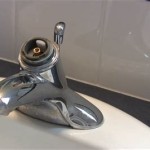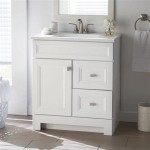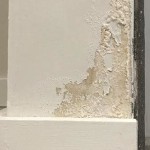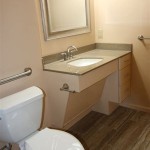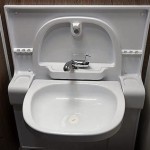Marble Vs Granite Bathroom Countertops: A Detailed Comparison
Selecting the right countertop material for a bathroom renovation or new construction project is a crucial decision. The countertop serves as a focal point and must be both aesthetically pleasing and functionally durable. Two of the most popular choices for bathroom countertops are marble and granite. Both are natural stone materials prized for their beauty and perceived value, but they possess distinct characteristics that make them suitable for different applications. This article provides a comprehensive comparison of marble and granite bathroom countertops, examining their properties, aesthetics, maintenance requirements, and cost considerations.
The inherent qualities of each stone dictate their suitability for specific bathroom environments and homeowner preferences. Understanding these differences enables informed decision-making based on individual needs and priorities. This analysis avoids subjective opinions and instead focuses on objective comparisons supported by industry knowledge and material science.
Aesthetic Properties: Veining, Color, and Finish
The visual appeal of a countertop significantly contributes to the overall ambiance of a bathroom. Marble and granite offer contrasting aesthetic experiences, primarily differentiated by their veining patterns, color palettes, and available finishes.
Marble is characterized by its distinctive veining. These veins are formed by mineral impurities that deposit within the stone during its metamorphic formation. Calacatta marble, for instance, showcases bold, dramatic veining patterns against a bright white background, while Carrara marble features softer, more subtle gray veining. The veining in marble is often considered a hallmark of luxury and elegance, imbuing the space with a sophisticated and timeless aesthetic.
Granite, on the other hand, typically exhibits a granular appearance. It contains interlocking mineral crystals, resulting in a speckled or mottled pattern. Granite's color range spans a wide spectrum, from light beige and creamy white to deep black, vibrant blues, greens, and reds. The variety of colors and patterns available in granite allows for greater design flexibility and the opportunity to complement diverse bathroom color schemes. The pattern complexity can range from subtle variations to highly intricate designs.
Both marble and granite can be finished in various ways, influencing their appearance and tactile qualities. Polished finishes create a glossy, reflective surface, enhancing the stone's color and highlighting its natural patterns. Honed finishes, in contrast, offer a matte, non-reflective surface that provides a more understated and contemporary look. Leathered or brushed finishes add texture to the stone, creating a unique and tactile experience. The choice of finish can significantly alter the overall aesthetic impact of the countertop, regardless of whether it is marble or granite.
The aesthetic choice between marble and granite is ultimately a matter of personal preference. Marble offers a classic and refined look with its distinctive veining, while granite provides greater color and pattern variety with its granular composition. Consideration should be given to the overall design style of the bathroom and the desired aesthetic impact when selecting between these two materials.
Durability and Maintenance: Porosity, Stain Resistance, and Sealing
The bathroom environment presents unique challenges in terms of countertop durability and maintenance. Frequent exposure to water, soap, and other potentially staining substances necessitates a material that is both resilient and easy to clean. Marble and granite differ significantly in their porosity and susceptibility to staining, requiring different maintenance strategies.
Marble is a relatively porous stone, meaning it has a higher capacity to absorb liquids than granite. This porosity makes marble more susceptible to staining from spills of common bathroom liquids, such as cosmetics, hair dye, and acidic cleaners. Etching, a dulling of the surface caused by acidic substances, is also a common concern with marble. Lemon juice, vinegar, and even some toothpaste can etch marble surfaces, leaving visible marks.
Granite is generally less porous than marble, making it more resistant to staining. The tighter crystalline structure of granite inhibits the absorption of liquids, providing greater protection against spills and stains. While granite is not entirely impervious to staining, it can withstand a wider range of substances without permanent damage.
Despite their inherent differences in porosity, both marble and granite require regular sealing to maintain their appearance and prevent staining. Sealing involves applying a protective coating to the stone's surface, which penetrates the pores and creates a barrier against liquids. The frequency of sealing depends on the type of sealant used and the level of traffic in the bathroom. Generally, marble countertops should be sealed more frequently than granite countertops, often every six to twelve months.
Cleaning marble and granite countertops involves using pH-neutral cleaners specifically formulated for natural stone. Harsh chemicals and abrasive cleaners should be avoided, as they can damage the stone's surface. Regularly wiping down the countertop after use and promptly cleaning up spills can help prevent staining and etching. The ongoing maintenance of a marble countertop generally requires more vigilance than a granite counterpart.
Comparing the durability and maintenance requirements of marble and granite reveals granite as the more resilient choice for bathroom countertops. Its lower porosity translates into greater stain resistance and easier upkeep. However, with proper sealing and diligent cleaning practices, marble can also be a durable and long-lasting countertop material.
Cost Considerations: Material, Fabrication, and Installation
The cost of bathroom countertops encompasses several factors, including the material cost, fabrication charges, and installation fees. Marble and granite vary in their pricing structures, influenced by factors such as rarity, quality, and availability. Understanding the cost implications of each material is crucial for budget planning and making informed purchasing decisions.
Marble is generally considered a more expensive material than granite. The higher price point of marble can be attributed to its rarity, the complexity of quarrying and processing, and the perceived luxury associated with the material. Certain varieties of marble, such as Calacatta, command even higher prices due to their exceptional quality and distinctive veining patterns.
Granite, being more abundant and easier to quarry, typically has a lower material cost than marble. However, the price of granite can vary depending on the color, pattern, and origin of the stone. Exotic granite varieties with unique colors and patterns are often priced higher than more common types.
Fabrication charges, which include cutting, shaping, and polishing the stone to the desired dimensions, are generally similar for marble and granite. The complexity of the countertop design, such as intricate edge profiles and custom cutouts, can affect fabrication costs. Installation fees can also vary depending on the complexity of the installation and the experience of the installer. It is advisable to obtain multiple quotes from different fabricators and installers to ensure competitive pricing.
Beyond the initial cost, the long-term maintenance expenses associated with marble and granite should also be considered. Marble, due to its higher porosity, may require more frequent sealing and specialized cleaning products, potentially leading to higher ongoing costs. Granite, with its greater stain resistance, may require less frequent maintenance and lower overall expenses.
In summary, while granite typically presents a lower initial cost compared to marble, the overall cost equation involves considering fabrication, installation, and long-term maintenance expenses. Homeowners should evaluate their budget constraints and maintenance preferences when determining the most cost-effective countertop option.
Ultimately, the choice between marble and granite for bathroom countertops depends on a careful evaluation of aesthetic preferences, durability requirements, and budgetary considerations. Both materials offer unique characteristics that can enhance the beauty and functionality of a bathroom. By understanding the properties, maintenance needs, and cost implications of each material, homeowners can make informed decisions that align with their individual needs and priorities.

Granite Vs Marble Countertops What Is The Difference

Quartz Vs Marble Granite Porcelain Countertops

Granite Vs Marble Difference Between And

Quartz Vs Granite Marble Corian Caesarstone

Granite Vs Marble Countertops Countertop Guides

Granite Vs Marble Countertops Which Option Is Right For You Woodard

Choosing Bathroom Countertops Quartz Granite Or Marble

Marble Vs Granite When And Why Should You Choose Or Marmi Rossi Spa

Cultured Marble Vs Granite Choosing The Best Material In 2024 Com

Quartz Vs Granite The Ultimate Guide Euromarble
Related Posts

